|
M. FORD CREECH ANTIQUES & FINE ARTS
Set of 12 Queen Anne / GEORGE I BRITANNIA SILVER DOGNOSE Table FORKS
John Ladyman, London, 1707-8 (10), 1721-22 (1), John Spackman I,
1701 (1)
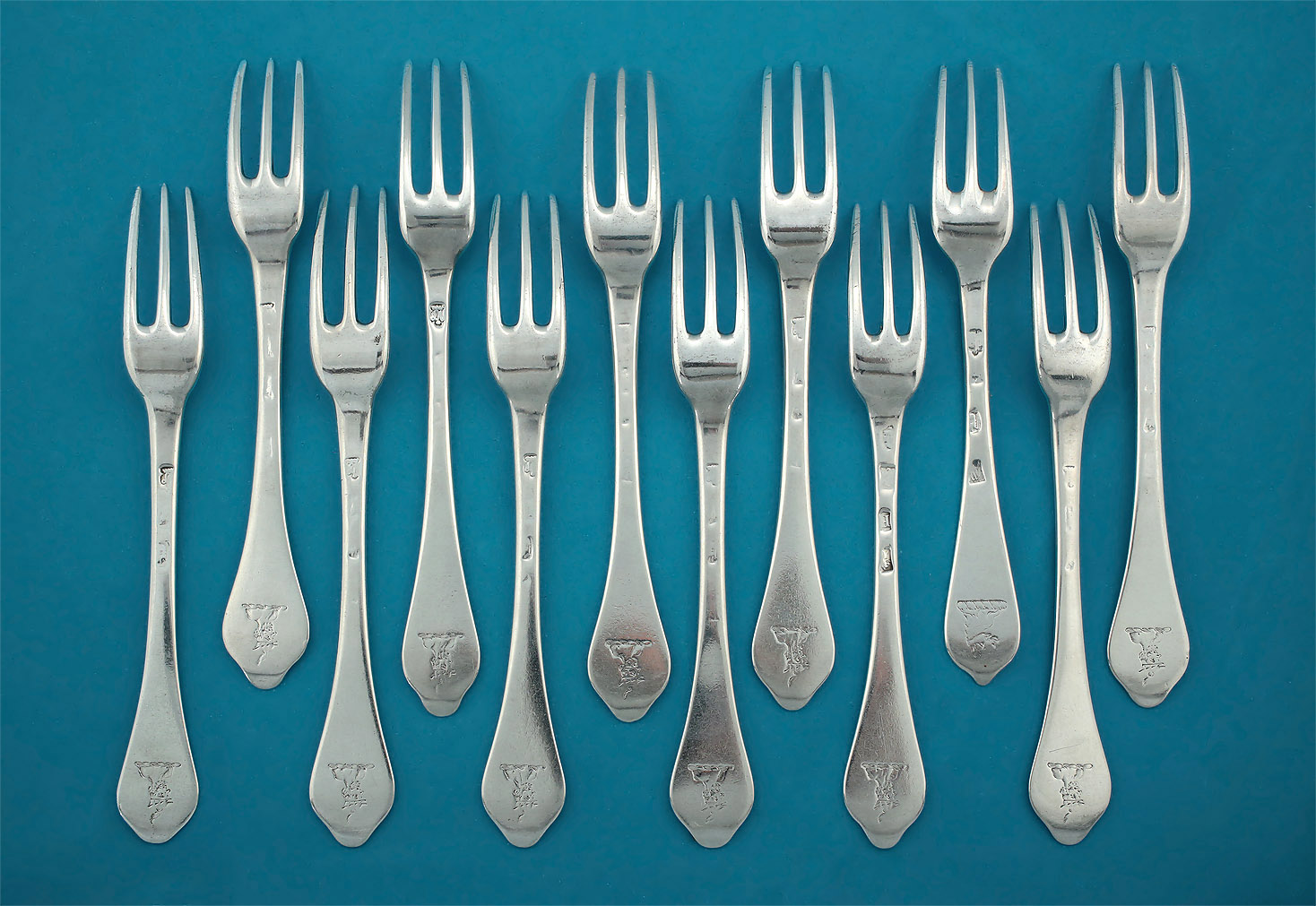
| |
Of heavy gauge .958 silver, the three tines and flat shaft ending in
a wavy-end (dognose) terminal,
11 terminals engraved with a crest :
A Saracen’s head in profile couped at the shoulders proper
hair and beard or
on the head a chapeau azure turned up tasseled (for Prideaux,
Devonshire and Cornwall);
the Spackman example, also 1707, terminal crested : a wolf's head
erased, Fairbairns 30.1
(Abrook et al, possibly with a yet unproven connection to
the Prideaux family)
Note :
The Prideaux family was begun in England by Paganus de Prideaux,
who held Prideaux Castle in Cornwall
under William I, suggesting
participation in the Norman Conquest of 1066. The family of Prideaux-Brune,
of Prideaux Place, Cornwall, descend
from the Prideauxs of Soldon.
Their family crest
includes the head of a Saracen, denoting their participation in the
crusades.
Condition : The tine tips with wear, some shorter to the outer
tines; marks rubbed on most, but several legible;
most crests still in good
readable order
Prior to the late 17th century,
forks had only two sharp tines.
At the very end of the 17th and
beginning of the 18th century, silver dinner forks with three tines
were introduced -
the three tines representing the thumb and two
first fingers, then proper for transporting solid foods to the
mouth.
Although forks had existed since biblical times, they were
quite slow to catch on in England.
The earlier British
clergy contended that God gave people fingers for eating,
and
declared forks to be diabolical (forks sometimes then referred to as
"pitchforks",
having the same Latin root furca).
The "sherbet
course" was introduced in the early 1700's, not to clear the
palette, as commonly thought,
but for the washing of the single fork
for the next course.
Queen Anne dognose forks are quite rare and
therefore quite expensive -
more suitable for the collector than for
table use.
Forks at this time were set face
down on the table.
It is said that the placement was to keep the
tines from “catching”
in the long lace cuffs worn during that period
of time.
7.5” Long / 27.4 oz
SOLD
#6796
Please
Inquire
|
|
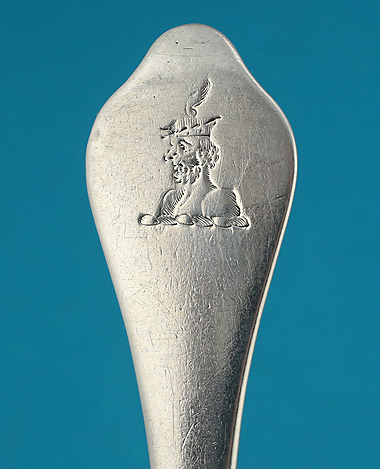 |
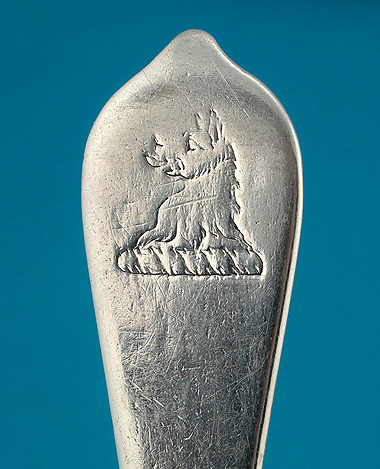 |
Ladyman Crest -
Prideaux |
Spackman Crest -
Wolf's Head Erased |
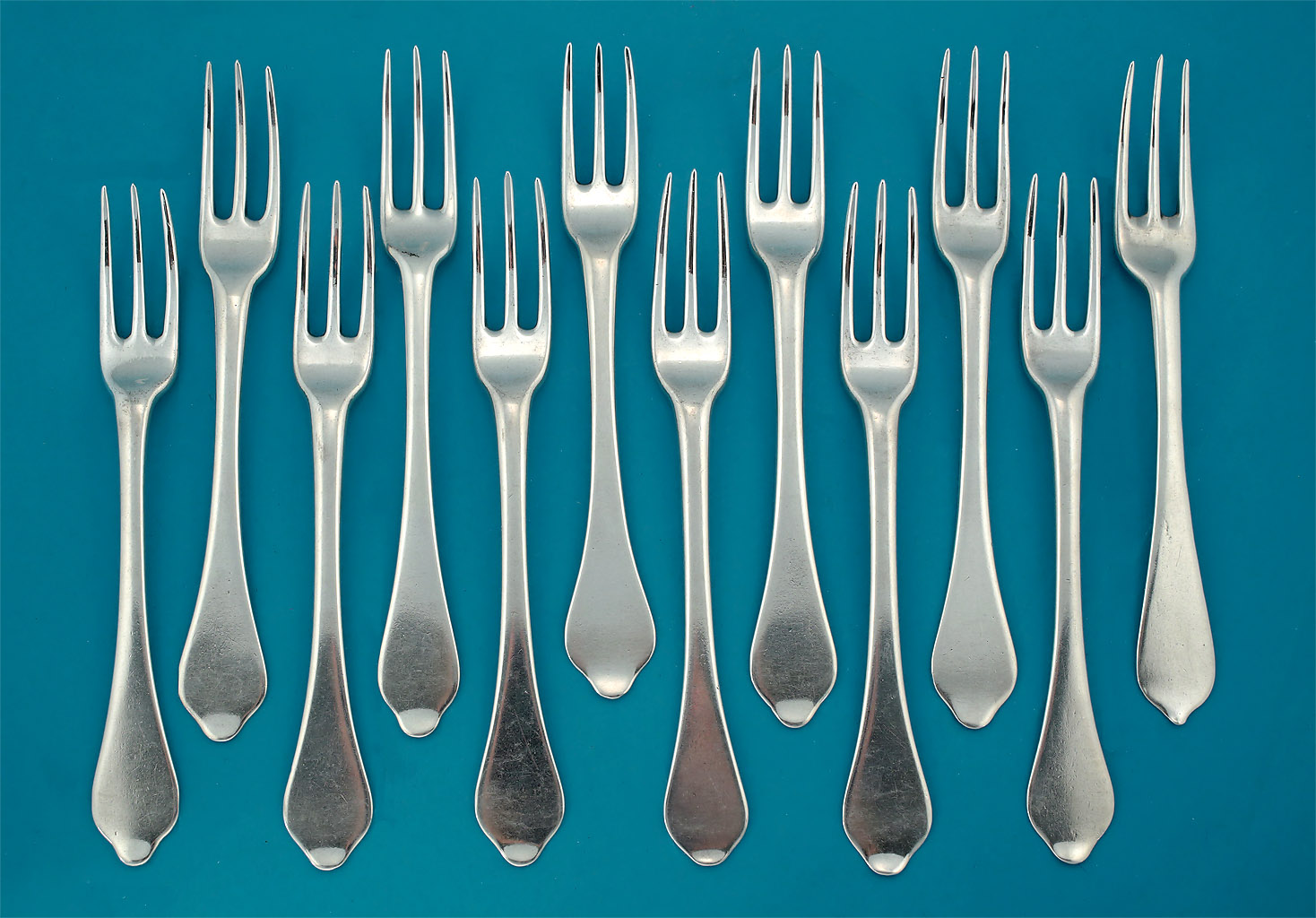
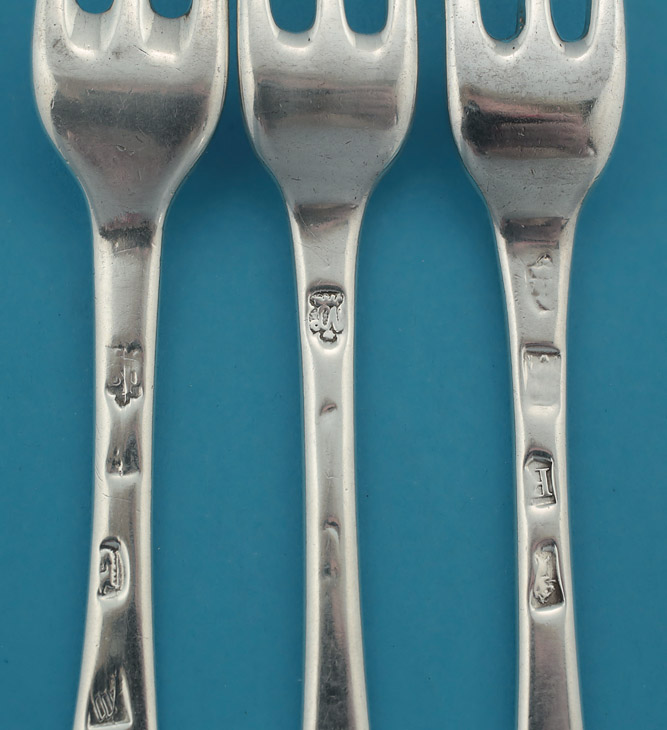
|
"The family of Prideaux is one of
ancient origin in England’s West Country
principally in the Counties of
Cornwall and Devon.
They were seated originally at Prideaux
Castle in Cornwall shortly after the Norman Conquest of 1066.
Branches of the family later
settled at Orcharton, Soldon and Luson in Devon.
The family of Prideaux-Brune, of
Prideaux Place, Cornwall (who are still extant) descend from the
Prideauxs, of Soldon.
A portrait of Edmund Prideaux (born 1693
died 1745), of Prideaux Place is shown here.
Another branch of the family who also
descend from the Prideauxs, of Soldon are the Prideauxs,
of Netherton in Devon who were
created Baronets in the Baronetage of England on the 17th July 1622.
Sadly the Prideaux Baronetcy fell into
extinction for want of a male heir upon the death of the ninth
baronet,
Sir Edmund Sanderson Prideaux in
1875."
(Courtesy John Tunesi of Liongam)
|
 |
Portrait of
Edmund Prideaux (1693-1745),
by William Aikman
|
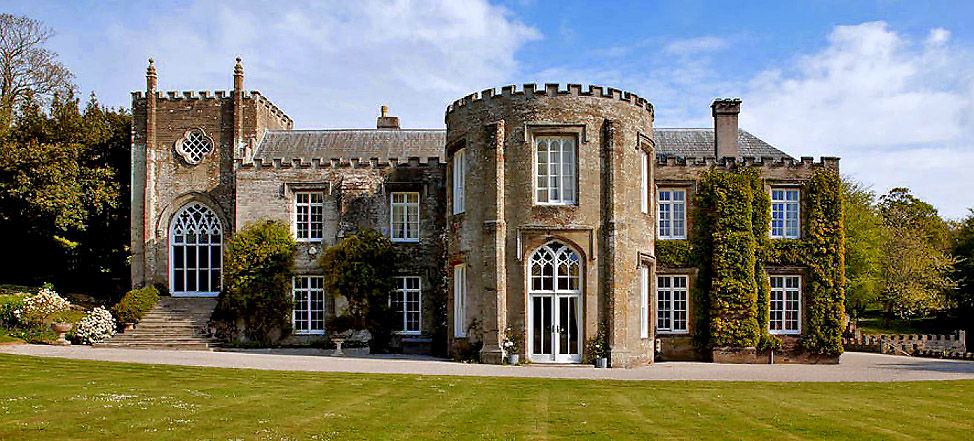 |
PRIDEAUX
PLACE, Padstow, North Cornwall,
an Elizabethan manor, completed in 1592, and home to the same family
since that date
|
Heraldry Courtesy of John Tunesi of Liongam
Hertfordshire, United Kingdom
SEE ALSO :
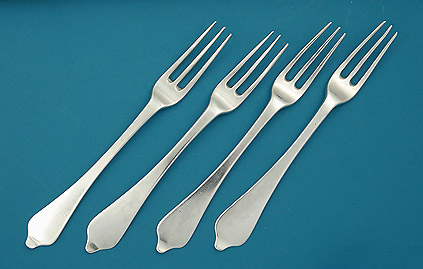
Rare Set of 4 Queen Anne Britannia
Silver Dognose 3-Tine Forks
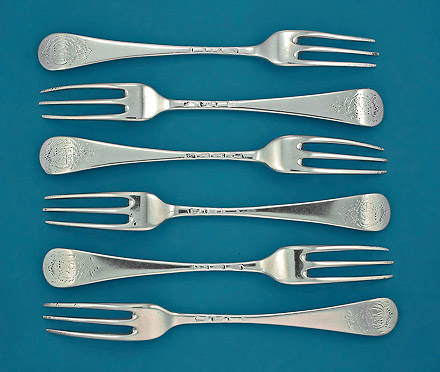
Set of Six Early George III Hanoverian 3-Tine Dinner Forks
Thomas & William Chawner, London, 1763
Arms of Chamier Impaling Wilson
Click for a related article:
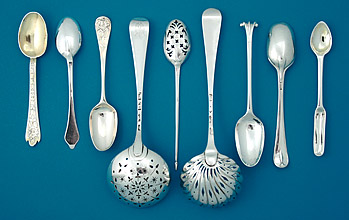
EARLY BRITISH TABLE SILVER
: A SHORT HISTORY
and
Early
British Table Silver : A Catalog
We welcome and encourage
all inquiries regarding our stock. We will make every attempt to answer any questions you might
have.
For
information, call (901) 761-1163 or (901) 827-4668,
or
Email : mfcreech@bellsouth.net or mfordcreech@gmail.com
American Express, Mastercard, Visa and Discover accepted

 
M. Ford Creech Antiques & Fine Arts / 581
South Perkins Road / Memphis,
TN 38117 / USA /
Wed.-Sat. 11-6, or by appointment
|
Accessories Ceramics Early Asian Ceramics Fine Art Furniture Glassware Silver Home
Set of 12 Queen Anne / George I Britannia Silver Dognose Table Forks, 1707 and 1721
© The images, concepts and text herein are subject to copyright.
Should you wish to reproduce any part of this site's content, simply request permission.
We also ask that any reproduction be attributed properly.
|
|
|









